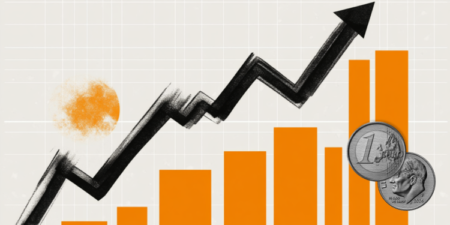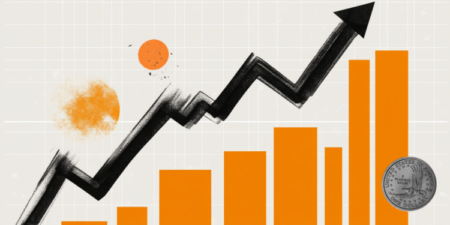- The Australian Dollar has rebounded from 0.6131, its lowest level since April 2020.
- The AUD receives support from strong commodity prices amid improved market sentiment.
- The US Dollar receives support from rising odds of the Fed maintaining rates in January.
The Australian Dollar (AUD) extends its gains against the US Dollar (USD) for a second consecutive day on Tuesday, rebounding from 0.6131, its lowest level since April 2020. The AUD/USD pair strengthened as the AUD benefitted from robust commodity prices.
US President-elect Donald Trump’s economic team considers a gradual increase in import tariffs boosted investor confidence, supporting the risk-sensitive currencies like the AUD and contributing to the appreciation of the AUD/JPY pair.
The S&P/ASX 200 Index also increased by 0.2% to around 8,210 on Tuesday, snapping a three-day losing streak. Mining and energy stocks led the recovery, while Australian shares followed overnight gains on Wall Street, where investors shifted focus from megacap tech stocks to other sectors.
Traders analyzed data showing a second consecutive monthly drop in consumer confidence. Australia’s Westpac Consumer Confidence Index fell by 0.7% to 92.1 points in January 2025, highlighting persistent pessimism among consumers.
The AUD/USD pair faces downward pressure as markets price in a 75% probability of a rate cut by the Reserve Bank of Australia (RBA) next month. Investors are expected to closely monitor Australian employment data, set to be released later this week, for additional clarity on the RBA’s policy outlook.
The AUD also found some support from China’s recent stimulus measures, given the close trading relationship between Australia and China, any changes in China’s economic conditions could significantly influence Australian markets.
Australian Dollar could struggle due to hawkish sentiment surrounding Fed’s policy outlook
- The US Dollar Index (DXY), which measures the US Dollar’s performance against six major currencies, trades near 109.60, its highest level since November 2022. The USD gained strength following robust US labor market data for December, which is expected to support the US Federal Reserve’s (Fed) decision to maintain interest rates at current levels in January.
- US labor market data fueled a rise in US Treasury yields, with the 2-year yield climbing to 4.42% and the 10-year yield reaching 4.80% as of Monday.
- Data from the US Bureau of Labor Statistics (BLS), released on Friday, reported that Nonfarm Payrolls (NFP) increased by 256K in December, significantly exceeding market expectations of 160K and surpassing the revised November figure of 212K (previously reported as 227K).
- Federal Reserve Board of Governors member Michelle Bowman added her voice to a chorus of Fed speakers last week as policymakers work double-duty to try and smooth over market reactions to a much tighter pace of rate cuts in 2025 than many market participants had previously anticipated.
- Kansas Fed President Jeffrey Schmid made headlines on Thursday, stating that most of the Federal Reserve’s mandated targets have recently been achieved. Schmid emphasized the need to reduce the Fed’s balance sheet, suggesting that interest rate policy is approaching its long-term equilibrium. He noted that any future rate cuts should be gradual and guided by economic data.
- On Monday, the China Foreign Exchange Committee (CFXC) pledged to support the Chinese Yuan during a meeting in Beijing on Monday, held under the guidance of the People’s Bank of China (PBOC). Separately, the PBOC and the State Administration of Foreign Exchange (SAFE), China’s FX regulator, announced an increase in the macro-prudential adjustment parameter for cross-border financing from 1.5 to 1.75, effective January 13, 2025.
- TD-MI Inflation Gauge climbed by 0.6% month-over-month in December, a significant acceleration from the 0.2% increase in November, reaching its highest level since December 2023. On an annual basis, the Inflation Gauge rose by 2.6%, down from the previous 2.9% increase.
- People’s Bank of China (PBOC) Governor Pan Gongsheng stated on Monday that “interest rate and reserve requirement ratio (RRR) tools will be utilized to maintain ample liquidity.” Gongsheng reaffirmed China’s plans to increase the fiscal deficit and emphasized that China will continue to be a driving force for the global economy.
Technical Analysis: Australian Dollar advances to near nine-day EMA, 0.6200
The AUD/USD pair trades around 0.6190 on Tuesday, maintaining its bearish outlook as it remains within a descending channel on the daily chart. The 14-day Relative Strength Index (RSI) has climbed above the 30 level, indicating a recovery from oversold conditions.
The pair faces immediate resistance at the nine-day Exponential Moving Average (EMA) at 0.6193, followed by the 14-day EMA at 0.6210. A more significant resistance level lies near the upper boundary of the descending channel, around 0.6230.
On the downside, the AUD/USD pair may test support at the lower boundary of the descending channel, close to the 0.5940 level.
AUD/USD: Daily Chart
Australian Dollar PRICE Today
The table below shows the percentage change of Australian Dollar (AUD) against listed major currencies today. Australian Dollar was the strongest against the US Dollar.
| USD | EUR | GBP | JPY | CAD | AUD | NZD | CHF | |
|---|---|---|---|---|---|---|---|---|
| USD | -0.35% | -0.33% | -0.03% | -0.17% | -0.48% | -0.77% | -0.27% | |
| EUR | 0.35% | 0.03% | 0.32% | 0.19% | -0.12% | -0.40% | 0.11% | |
| GBP | 0.33% | -0.03% | 0.29% | 0.17% | -0.15% | -0.44% | 0.09% | |
| JPY | 0.03% | -0.32% | -0.29% | -0.13% | -0.44% | -0.74% | -0.21% | |
| CAD | 0.17% | -0.19% | -0.17% | 0.13% | -0.31% | -0.60% | -0.08% | |
| AUD | 0.48% | 0.12% | 0.15% | 0.44% | 0.31% | -0.28% | 0.24% | |
| NZD | 0.77% | 0.40% | 0.44% | 0.74% | 0.60% | 0.28% | 0.53% | |
| CHF | 0.27% | -0.11% | -0.09% | 0.21% | 0.08% | -0.24% | -0.53% |
The heat map shows percentage changes of major currencies against each other. The base currency is picked from the left column, while the quote currency is picked from the top row. For example, if you pick the Australian Dollar from the left column and move along the horizontal line to the US Dollar, the percentage change displayed in the box will represent AUD (base)/USD (quote).
RBA FAQs
The Reserve Bank of Australia (RBA) sets interest rates and manages monetary policy for Australia. Decisions are made by a board of governors at 11 meetings a year and ad hoc emergency meetings as required. The RBA’s primary mandate is to maintain price stability, which means an inflation rate of 2-3%, but also “..to contribute to the stability of the currency, full employment, and the economic prosperity and welfare of the Australian people.” Its main tool for achieving this is by raising or lowering interest rates. Relatively high interest rates will strengthen the Australian Dollar (AUD) and vice versa. Other RBA tools include quantitative easing and tightening.
While inflation had always traditionally been thought of as a negative factor for currencies since it lowers the value of money in general, the opposite has actually been the case in modern times with the relaxation of cross-border capital controls. Moderately higher inflation now tends to lead central banks to put up their interest rates, which in turn has the effect of attracting more capital inflows from global investors seeking a lucrative place to keep their money. This increases demand for the local currency, which in the case of Australia is the Aussie Dollar.
Macroeconomic data gauges the health of an economy and can have an impact on the value of its currency. Investors prefer to invest their capital in economies that are safe and growing rather than precarious and shrinking. Greater capital inflows increase the aggregate demand and value of the domestic currency. Classic indicators, such as GDP, Manufacturing and Services PMIs, employment, and consumer sentiment surveys can influence AUD. A strong economy may encourage the Reserve Bank of Australia to put up interest rates, also supporting AUD.
Quantitative Easing (QE) is a tool used in extreme situations when lowering interest rates is not enough to restore the flow of credit in the economy. QE is the process by which the Reserve Bank of Australia (RBA) prints Australian Dollars (AUD) for the purpose of buying assets – usually government or corporate bonds – from financial institutions, thereby providing them with much-needed liquidity. QE usually results in a weaker AUD.
Quantitative tightening (QT) is the reverse of QE. It is undertaken after QE when an economic recovery is underway and inflation starts rising. Whilst in QE the Reserve Bank of Australia (RBA) purchases government and corporate bonds from financial institutions to provide them with liquidity, in QT the RBA stops buying more assets, and stops reinvesting the principal maturing on the bonds it already holds. It would be positive (or bullish) for the Australian Dollar.
Read the full article here
















